If you’re caught up in a legal case or an insurance claim because of an injury or health problem, you might have to go through a medical legal examination.
A medical legal examination is an independent medical evaluation done by a qualified physician. The goal is to give an objective medical opinion for legal proceedings, insurance disputes, or workers’ compensation cases.

This exam isn’t about treating your condition or giving you medical advice. The doctor has never seen you before and only looks at your health for legal reasons.
These evaluations help establish causation, extent of injury, and potential long-term effects to keep things fair in legal matters.
Knowing what happens during these exams can help you get ready. The process includes a detailed medical evaluation, lots of documentation, and a report that could sway your case.
Key Takeaways
- Medical legal exams offer independent medical opinions for legal and insurance cases through objective evaluation by qualified physicians
- The examining doctor won’t treat you but will assess your condition to determine causation, disability, and prognosis for legal purposes
- These exams follow a set process: thorough evaluation, detailed reporting, and sometimes expert testimony in court
Defining Medical Legal Examination
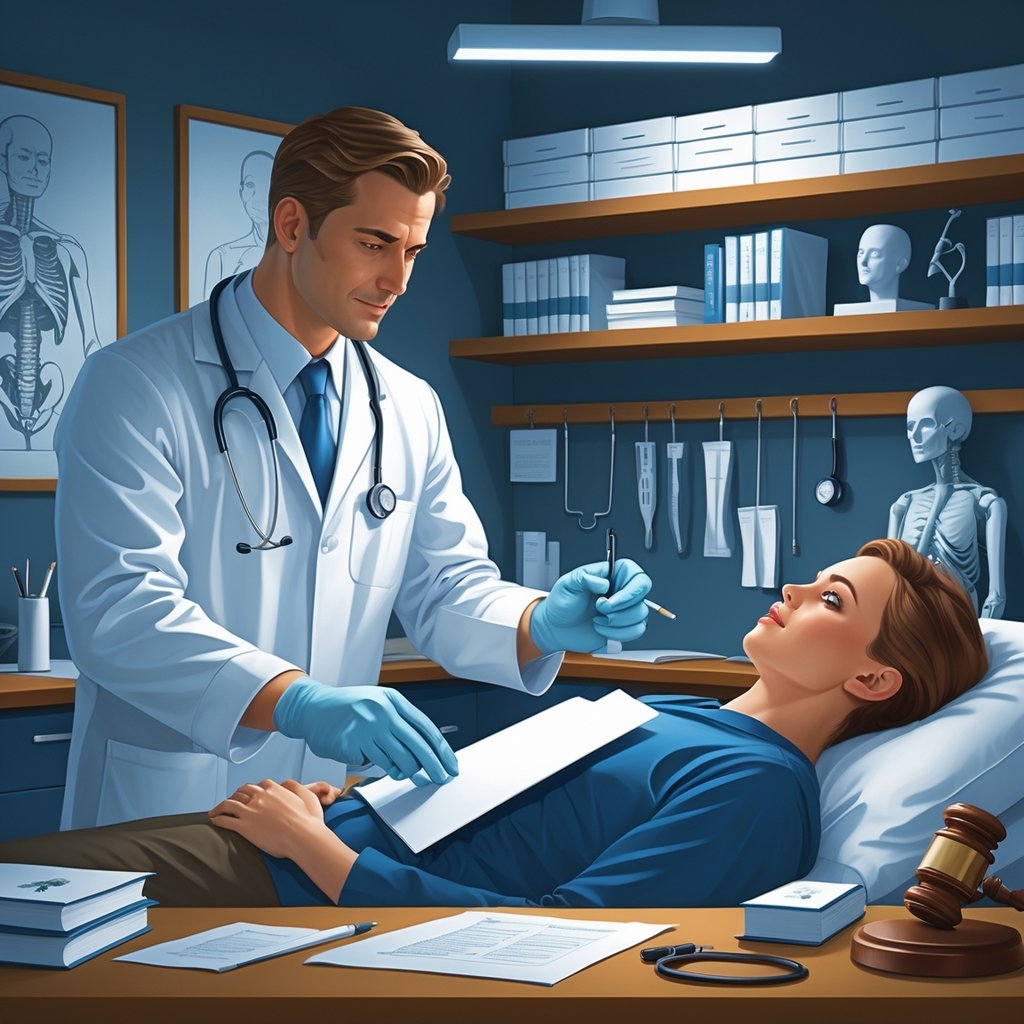
A medical legal examination is a special evaluation done by a medical examiner to give an objective medical opinion for legal use.
These exams focus on assessment, not treatment, and serve specific legal or insurance needs.
Purpose and Importance
Medical legal examinations assess injuries and conditions for legal or insurance matters. The main goal is to get a medical opinion about the nature, extent, and likely cause of an illness or injury tied to a compensation claim.
These exams serve three big purposes:
- Establish causation and figure out injury extent for fair compensation
- Support legal decisions with objective medical evidence
- Maintain system integrity with reliable and unbiased medical assessments
The doctor will focus on the legal questions, not on treating you or giving advice.
This exam helps courts and insurance companies make decisions. Medical opinions from these assessments ensure medical facts come through clearly in legal proceedings.
Key Differences from Clinical Examinations
A medical legal exam is very different from a regular check-up.
Your usual doctor cares about your health and treatment. The medical legal examiner only checks your condition for legal purposes.
Clinical Examinations:
- Treat and diagnose
- Provide ongoing care
- Focus on wellness
- Build a doctor-patient relationship
Medical Legal Examinations:
- Assess for legal reasons
- Don’t provide treatment
- Focus on objective evaluation
- Limited examiner-patient interaction
The medical examiner won’t become your treating doctor. They can’t prescribe medication or suggest treatments.
This exam is for the legal process. The examiner’s job is to give an independent medical assessment, not to advocate for your health.
Common Legal Contexts
Medical legal examinations pop up in all sorts of legal situations.
Personal injury assessments look at physical and psychological impacts from accidents or negligence.
Workers’ compensation claims need occupational health assessments. These look at workplace hazards and how they affect your health and job.
Disability determinations use these exams to measure what you can and can’t do. The medical examiner checks how your condition affects daily life and work.
Insurance claims often ask for independent medical evaluations. Companies use these to confirm the extent and cause of injuries or illnesses.
Medical malpractice cases call for special exams. These check if healthcare providers met standards of care.
Mental health assessments look at psychological injuries and psychiatric conditions. The examiner considers emotional trauma and how it affects your life.
Key Participants and Their Roles
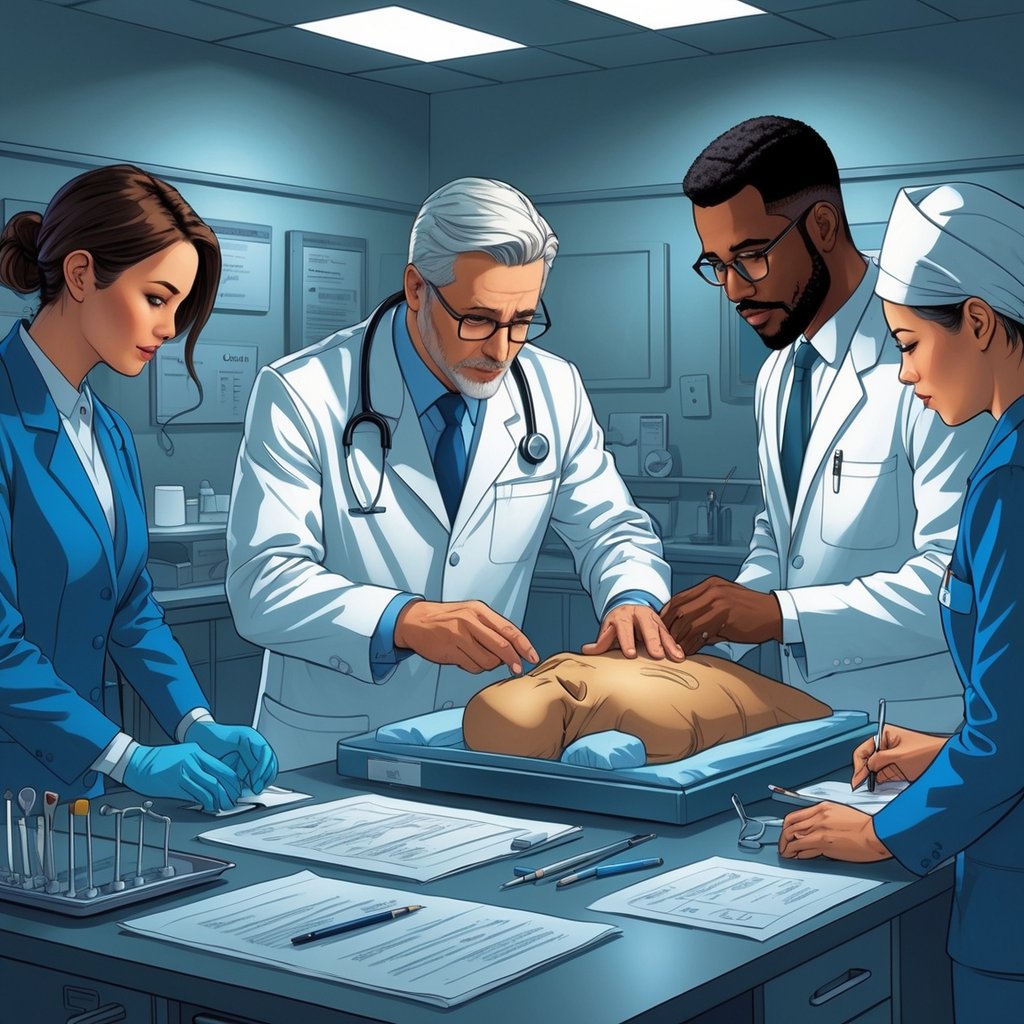
Medical legal exams involve three main groups: physicians, medical examiners, and legal professionals. Each brings something different to the table.
Role of the Physician
The physician acts as the main medical evaluator in legal cases. They perform a thorough physical exam and review your history to form an opinion.
During independent medical examinations, the physician stays neutral. They don’t treat you, which keeps things unbiased.
Key physician responsibilities:
- Do a thorough physical exam
- Review records and test results
- Document findings
- Write detailed reports
- Provide expert testimony if needed
The physician’s findings can really affect your case. Their objective opinions often become major evidence.
Most physicians in these roles have training in forensic medicine. This helps them understand both medical and legal sides of these exams.
Responsibilities of the Medical Examiner
Medical examiners bring specialized expertise, especially for complex cases. They handle cases involving death, serious injury, or disputed conditions.
Medical examiners play a key role in personal injury claims and workers’ compensation disputes. Their unbiased assessments help courts make sense of medical evidence.
Medical examiner duties:
| Primary Tasks | Legal Support |
|---|---|
| Autopsy exams | Expert testimony |
| Cause of death findings | Court consultations |
| Toxicology analysis | Report prep |
| Evidence collection | Case documentation |
They often work with law enforcement and attorneys. This teamwork ensures medical evidence meets court standards.
Medical examiners need to keep up with medical and legal changes. Their dual expertise is valuable in tough cases.
Involvement of Legal Professionals
Legal professionals coordinate the whole medical legal exam process. They work with physicians and examiners to gather evidence for your case.
Attorneys usually request these exams to back up their legal arguments. They decide what medical questions need answers and which experts to use.
Legal professional responsibilities:
- Select medical experts
- Prepare exam questions
- Handle scheduling and logistics
- Review reports for legal relevance
Expert witnesses serve as educators and evaluators. Legal professionals help them know what the court wants.
Insurance companies have legal teams for these exams too. They use findings to make coverage decisions and defend claims.
The legal team makes sure exams follow proper procedures. This keeps the medical evidence solid in court.
Core Components of a Medical Legal Examination
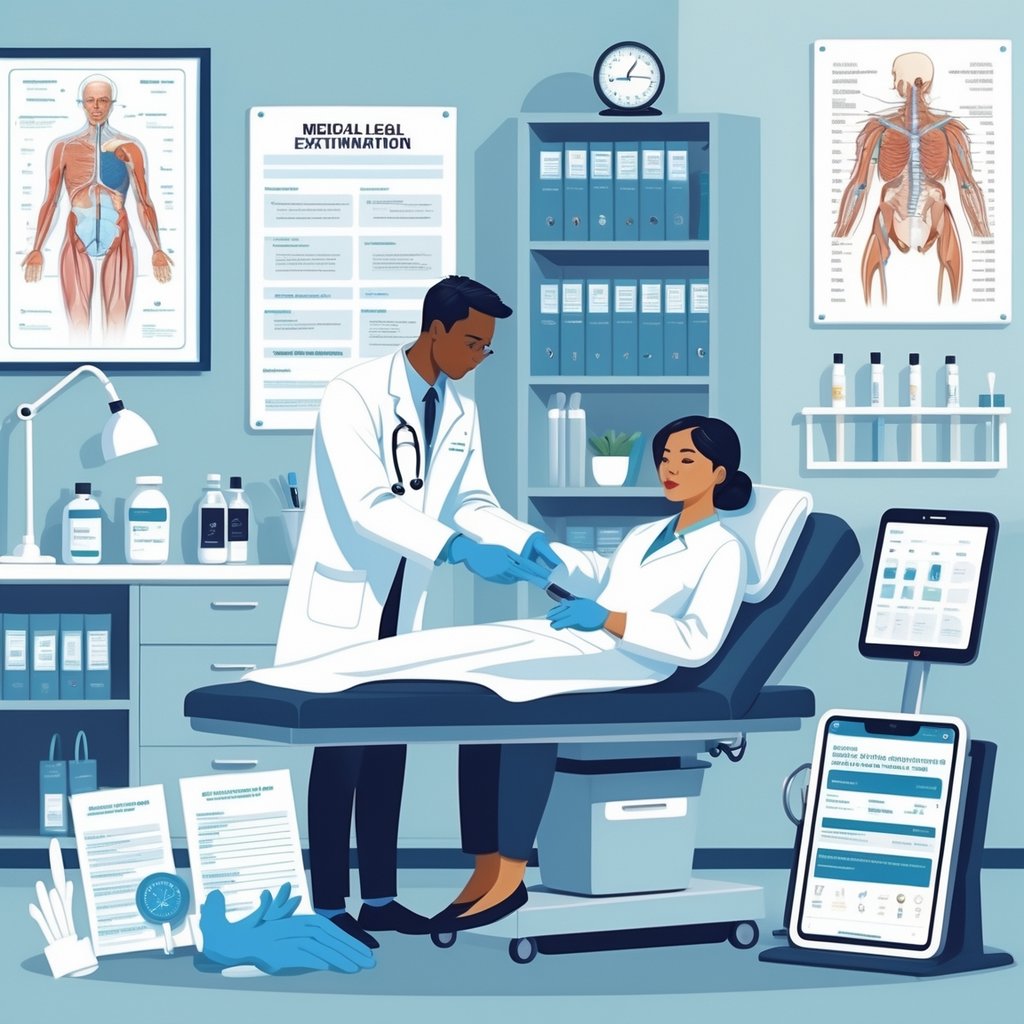
A medical legal examination has three main parts. The doctor reviews your health history, studies your records, and does a hands-on exam.
Review of Medical History
The examiner will ask about your health before and after your injury or illness. This includes past injuries, surgeries, or conditions that could matter now.
You’ll talk about when your symptoms started and how they’ve changed. The doctor wants to know what you could do before your injury and what’s different now.
Key areas the examiner will cover:
- Past medical conditions
- Medications
- Family health history
- Work history and job duties
- How the injury happened
You’ll discuss daily activities and what’s now tough or impossible. This helps them see how your condition affects your life.
Be honest about your symptoms and limits. The doctor is looking for objective evidence to support legal or insurance decisions.
Analysis of Medical Records
The examiner will go through all your medical files from doctors, hospitals, and other providers. This includes test results, x-rays, MRI scans, and treatment notes.
They look for patterns in your care and check if your complaints match what’s in your records. The files show how your condition has changed.
Important documents:
- ER visits
- Doctor notes
- Physical therapy records
- Test results
- Prescription records
The examiner compares findings from different doctors. They also check if you followed treatment plans and kept appointments.
Missing records can hurt your case. Make sure your lawyer gives the examiner everything.
Conducting the Physical Examination
The physical exam feels a lot like a normal doctor’s visit but focuses on areas tied to your legal case. The examiner checks your movement, strength, and reflexes.
They look at any injuries, scars, or deformities. The doctor might ask you to do certain movements or tasks.
Common tests:
- Range of motion
- Muscle strength
- Neurological reflexes
- Walking and balance
- Lifting or gripping
The exam is independent and impartial. The doctor won’t treat you or give advice.
The examiner writes down everything they see. They note what you can and can’t do.
Don’t push yourself past your limits. If something hurts, say so.
Types of Medical Legal Examinations

Medical legal examinations come in several forms, each for a specific legal need. The one you get depends on your case, where your injury happened, and if it’s work-related or not.
Independent Medical Examinations (IME)
An Independent Medical Examination is done by a physician who hasn’t treated you before. The exam helps figure out the cause, extent, and treatment needs for your injury.
IMEs are common in personal injury cases. If you got hurt in a car accident or a slip and fall, the insurance company might request an IME. The doctor reviews your records and examines you to give an unbiased opinion.
Common IME types:
- Functional capacity evaluations
- Disability assessments
- Treatment necessity reviews
- Maximum medical improvement checks
The physician doesn’t know you and hasn’t treated you before. This keeps things objective and legally sound.
Qualified Medical Evaluations (QME)
Qualified Medical Evaluators are only found in California workers’ compensation cases.
If you’re hurt at work in California and there’s a dispute, you’ll probably need a QME.
QME doctors must pass a tough test and complete specialized training. Half of them fail the test on their first try. They’re certified by California’s Department of Workers’ Compensation for two years at a time.
The process is tightly controlled. If you need a QME, the department gives you a list of three doctors. Your attorney crosses out one, the insurance company crosses out another, and the last doctor does your exam.
The QME reviews your records and examines you. Then they issue a medical opinion used as evidence before the Workers’ Compensation Appeals Board.
Agreed Medical Evaluations (AME)
An Agreed Medical Evaluation comes into play in California workers’ compensation cases when both sides agree on the examining doctor. This skips the formal panel process required for QMEs.
Your attorney and the insurance company pick the physician together. The chosen doctor is usually a QME, but doesn’t have to be.
AMEs and QMEs feel the same for the patient during the exam and reporting steps. The main difference is just how the doctor gets picked.
This kind of agreement can speed things up. It also lets both sides choose someone they feel comfortable with.
Personal Injury and Workers’ Compensation Cases
The type of case you have decides which exam you’ll get. Workers’ compensation cases in California use QMEs or AMEs, but personal injury cases use IMEs.
Workers’ compensation cases involve:
- On-the-job injuries
- Occupational diseases
- Work-related repetitive stress injuries
Personal injury cases include:
- Motor vehicle accidents
- Slip and fall incidents
- Medical malpractice claims
- Product liability cases
The doctor examines you and reviews your records, no matter which case you have. Still, the legal rules and how you get assigned to a doctor are pretty different between workers’ comp and personal injury cases.
Your lawyer will walk you through which examination fits your situation.
Process of Conducting a Medical Legal Examination

The examiner follows a step-by-step approach that starts with preparation, then moves to a full evaluation, and ends with careful analysis. Each part needs its own documentation and follows set protocols.
Preparation and Information Gathering
Your examiner starts by collecting your medical records and any diagnostic tests. They’ll check your medical history, treatment records, and earlier assessments.
They look at referral documents from your lawyer or the insurance company. They focus on the specific questions that need answers.
If anything’s missing, your examiner might ask for more information. They want to see the whole picture before meeting you.
Key preparation elements include:
- Reviewing medical records
- Looking at diagnostic tests
- Researching your case
- Getting equipment ready
The examiner checks relevant medical literature and standards of care. They make sure any equipment needed for your specific condition is ready.
Interview and Examination Procedures
The examination reviews your medical history and includes a full physical assessment. Your examiner asks about your symptoms, pain, and what you can or can’t do.
You’ll go through physical tests tied to your condition. The examiner documents everything carefully.
The interview covers:
- Current symptoms
- Pain descriptions
- Limits on daily activities
- Changes in work ability
Standardized tests measure your function and movement. You might get neurological checks, range of motion tests, or strength evaluations.
The whole process usually takes one to three hours, depending on how complicated things are. The examiner keeps detailed notes during your visit.
Formulation of Medical Opinion
Your examiner reviews all the information to form a medical opinion. They compare your condition to medical standards and research.
They figure out if there’s a link between the incident and your symptoms. They also judge if you have any lasting impairment.
The expert writes a detailed report that explains their findings and answers the legal questions in the referral.
Report components include:
- Exam findings
- Medical opinion statements
- Causation analysis
- Prognosis assessments
Your examiner might suggest future treatment or work limits. They stick to what they know and don’t go outside their expertise.
Reporting and Legal Outcomes
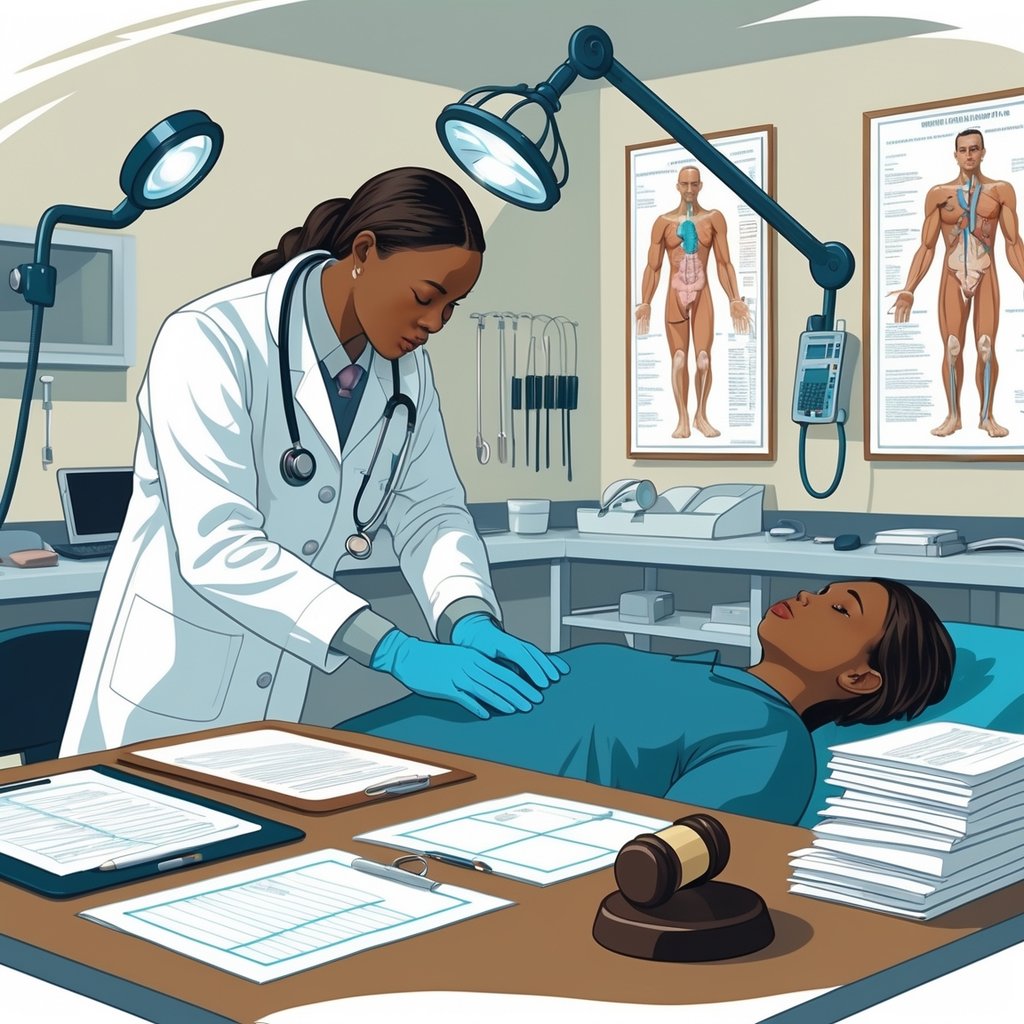
The medical legal exam leads to formal reports that become evidence in court. These reports use your records and the doctor’s opinion to support decisions about compensation, liability, or treatment.
Structure of the Report
Medical legal reports stick to a format that courts and lawyers expect. The report starts with your basic details and why the exam happened.
Key sections include:
- Medical history – Details from your records and past treatments
- Physical examination findings – What the doctor found during your exam
- Medical opinion – The doctor’s professional judgment about your condition
- Causation analysis – If your injury connects to the legal incident
The doctor writes each part so judges and juries can follow the details. Your records back up what the expert says.
The report lists dates, test results, and treatment details. This level of detail helps your lawyer make a stronger case.
Use of Expert Opinions in Court
Courts lean heavily on the medical opinion in these reports. The examining doctor can serve as an expert witness and talk about your condition.
Judges trust expert opinions because of the doctor’s training. The expert explains how your injuries impact your life and work.
Lawyers use these opinions to show:
- How serious your injuries are
- What caused your problems
- What care you might need in the future
Your records show what changed after the incident. This comparison makes medical expert witness reports even stronger in court.
Implications for Patients and Legal Proceedings
The exam results can shape your compensation and the outcome of your legal case. A strong medical opinion might bump up your settlement or help win your case.
The report affects:
- Disability ratings that influence compensation amounts
- Future medical costs the other side might have to pay
- Work limitations that impact lost wage claims
Your records become a permanent part of your legal file. Insurance companies and the other side’s lawyers will look them over closely.
The exam can even affect your future care. Sometimes doctors adjust your treatment plan based on what comes out in the legal exam. That impacts both your health and your case.
Frequently Asked Questions
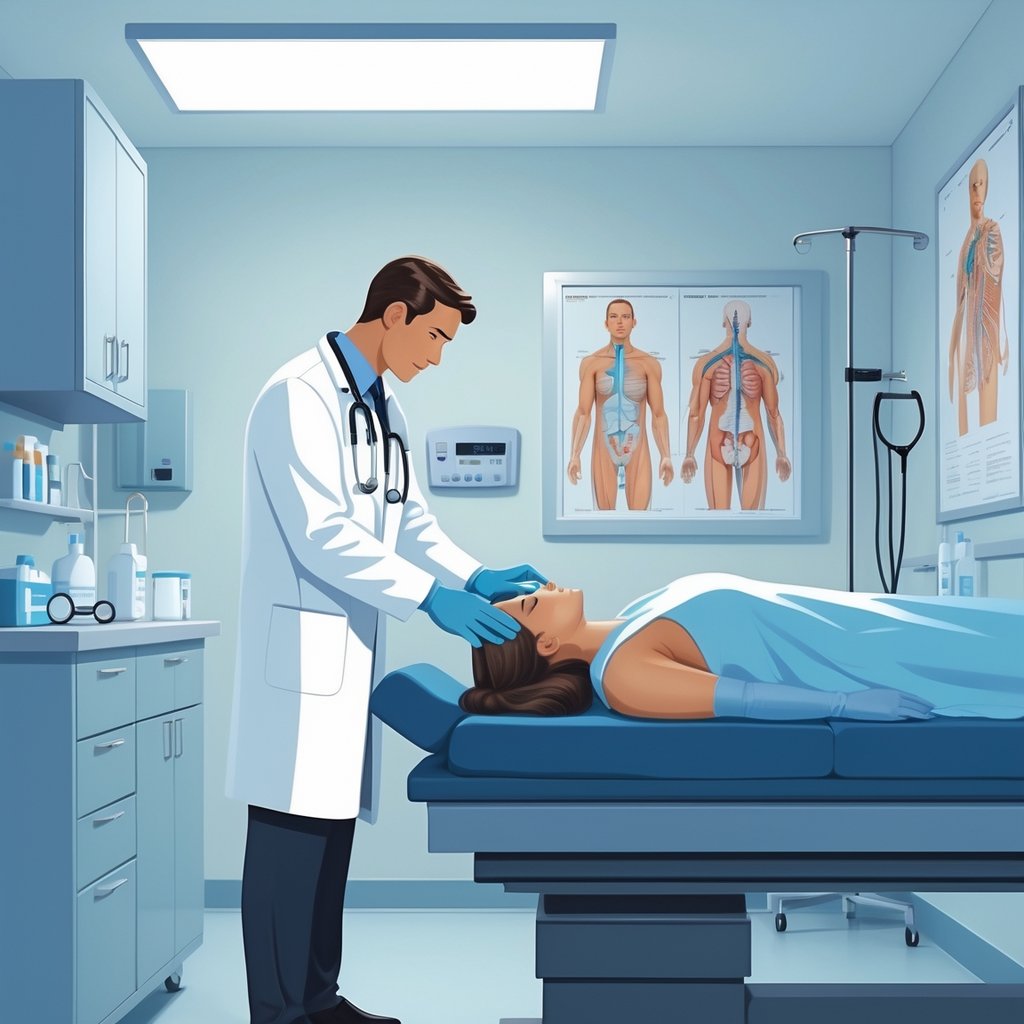
Medical legal exams raise plenty of questions about cases, procedures, and reports. The process follows specific protocols for exams, documentation, and deadlines.
What constitutes a medico-legal case?
A medico-legal case mixes medical treatment and legal investigation. These come up when treatment happens under circumstances that might involve crime or legal questions.
Common examples include injuries from violence, accidents, poisoning, or suspected abuse. Sexual assault cases are also in this group.
Any case where medical findings could be used as evidence in court counts as medico-legal. The medical professional must document everything for possible legal action.
How does one conduct a medico-legal examination?
The examiner starts with a thorough review of medical records. This means looking at reports from doctors, imaging, and hospital notes.
You answer questions about the incident, your symptoms, and your history. The examiner asks how your injuries affect your life and work.
Next comes a physical exam related to your injuries. They might check your range of motion, strength, sensation, and reflexes.
The examiner stays neutral and doesn’t give treatment or advice during the exam.
What information is typically included in a medico-legal report?
The report gives a summary of your history and exam findings. It includes the doctor’s opinion about your diagnosis and likely causes.
Long-term impact and prognosis are important parts. The examiner discusses how your condition affects your ability to work or function.
The report covers liability, causation, and compensation. It might also mention future medical needs.
All findings rely on medical facts and stay unbiased. The report can end up as evidence in court.
What are the common types of medico-legal cases?
Personal injury claims are a big chunk of medico-legal cases. These cover slip and fall accidents, workplace injuries, and assault.
Motor vehicle accident claims need medico-legal exams. Workers’ comp cases do as well.
Medical negligence cases involve possible malpractice claims. Disability and income protection matters often need these exams too.
Five main types include trauma cases, negligence claims, workplace injuries, insurance disputes, and criminal cases. Each has its own documentation and exam needs.
What is the time limit for reporting a medico-legal case?
Time limits depend on where you are and the case type. Most places require fast reporting for things like suspected abuse or violence.
Criminal cases usually have tighter deadlines than civil ones. Some cases must be reported within 24 hours.
Hospitals set their own rules for reporting timeframes. Emergencies might require immediate notification.
You’ll want to check local laws and hospital policies for exact deadlines. Reporting late can really hurt your case.
How are independent medical examination companies involved in medico-legal cases?
Independent medical examination companies coordinate assessments between legal teams and medical specialists. They match each case with a medical expert who understands the specific injury.
These companies make sure examinations follow legal standards. They also keep everything on schedule.
They work with a network of specialists in many medical fields. When it comes to scheduling, documentation, and delivering reports, they take care of all the details.
These companies stay neutral and don’t take sides in legal disputes. They focus on quality control and making sure reports are thorough and legally sound.










